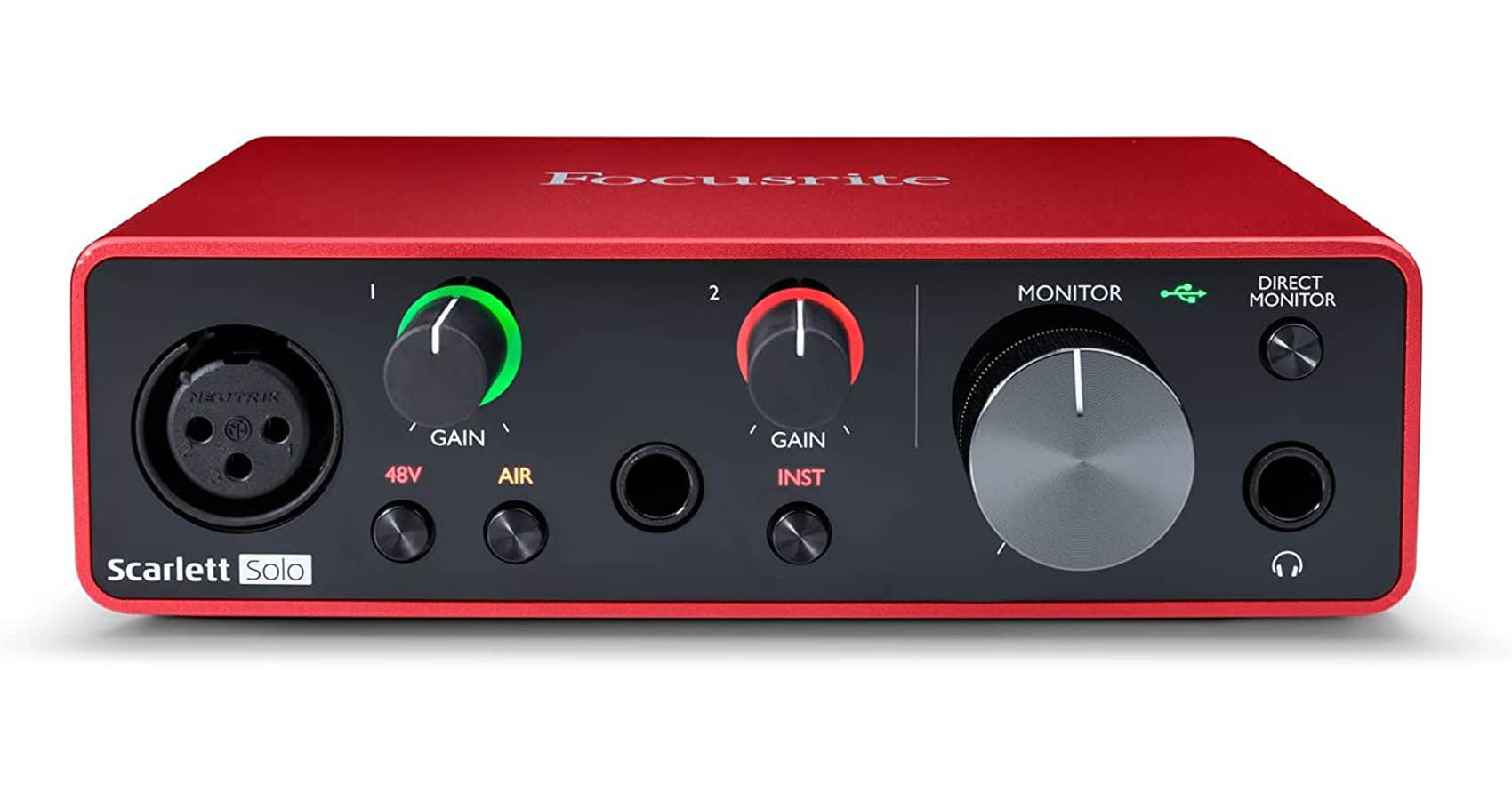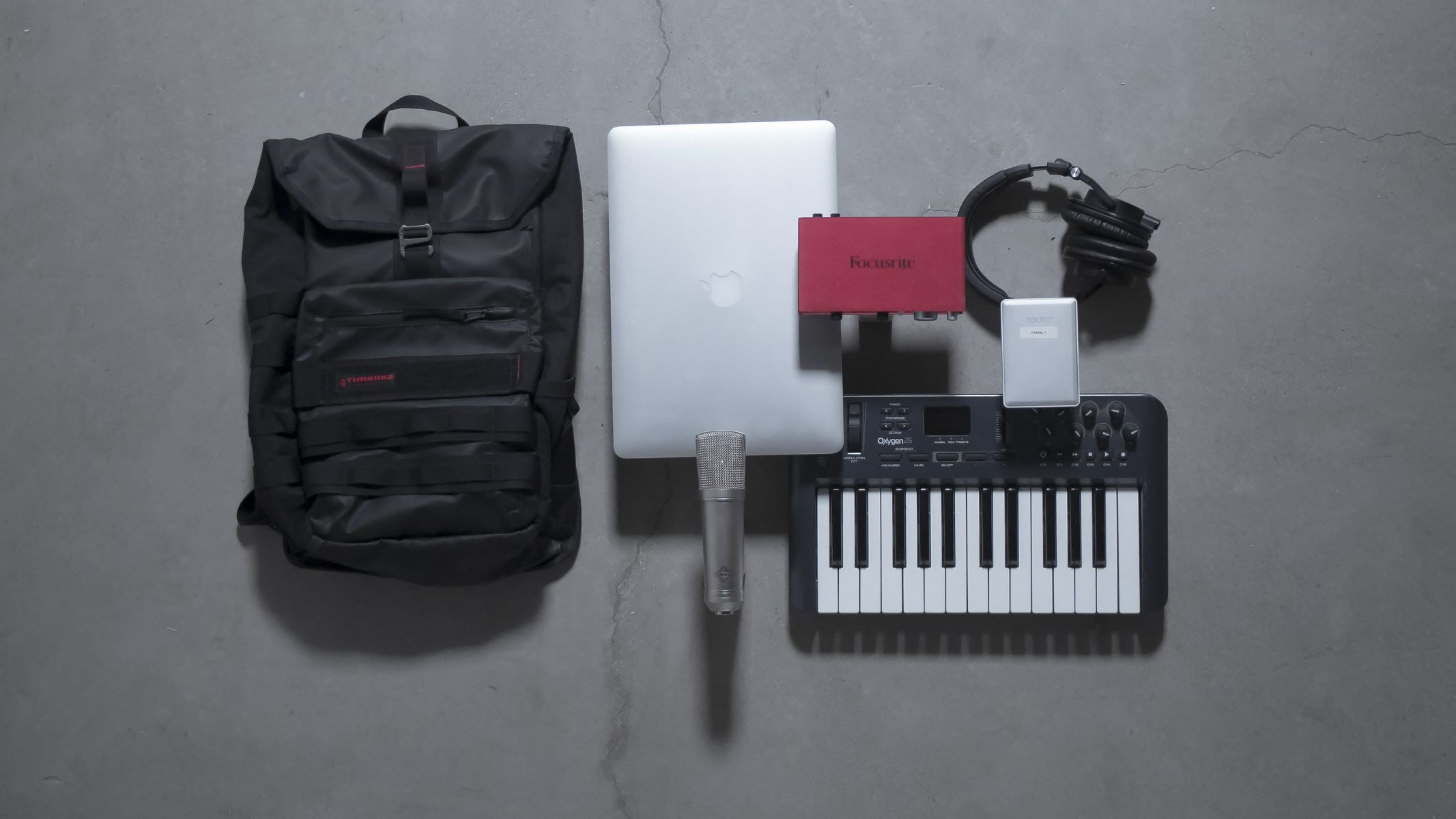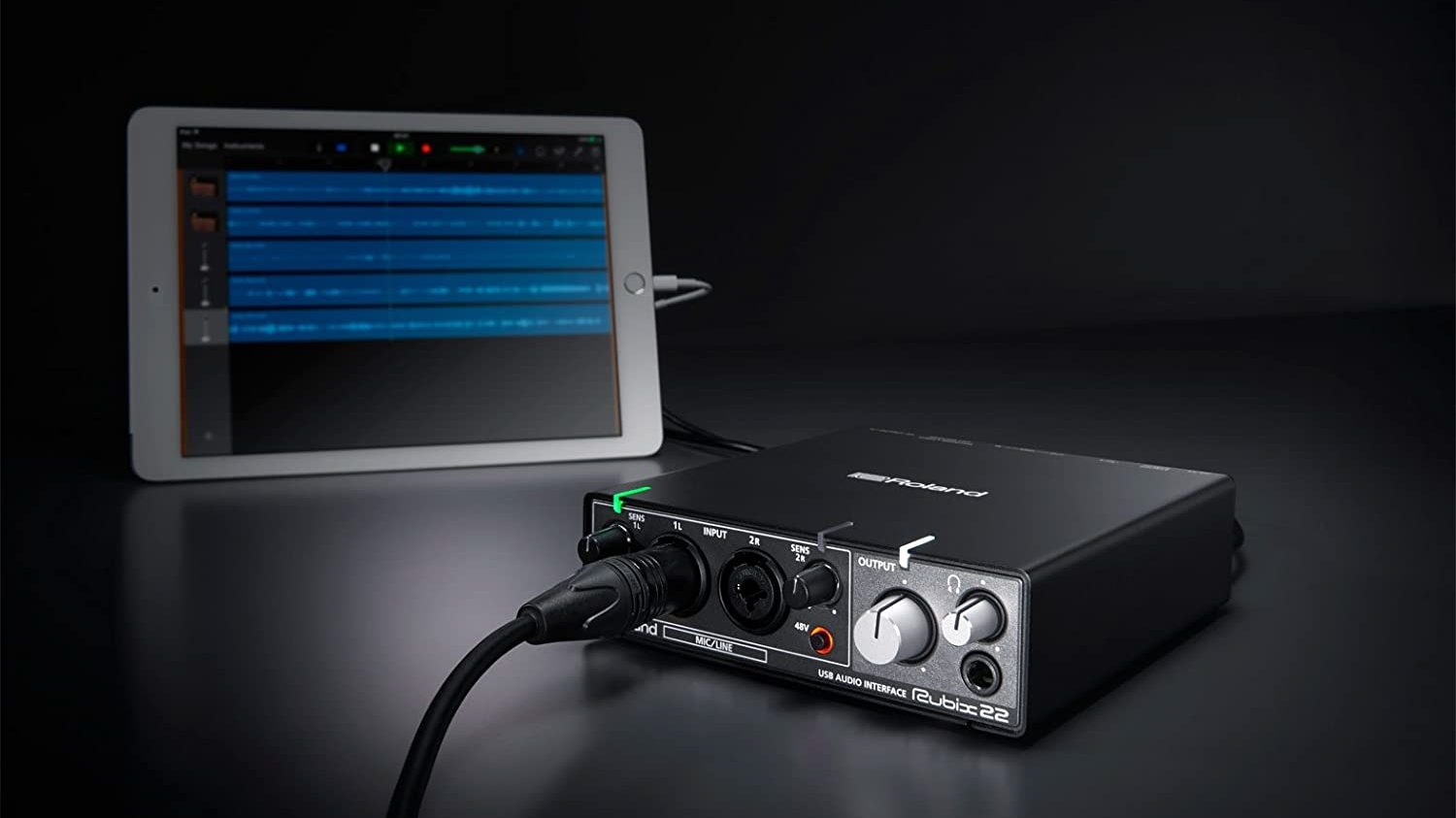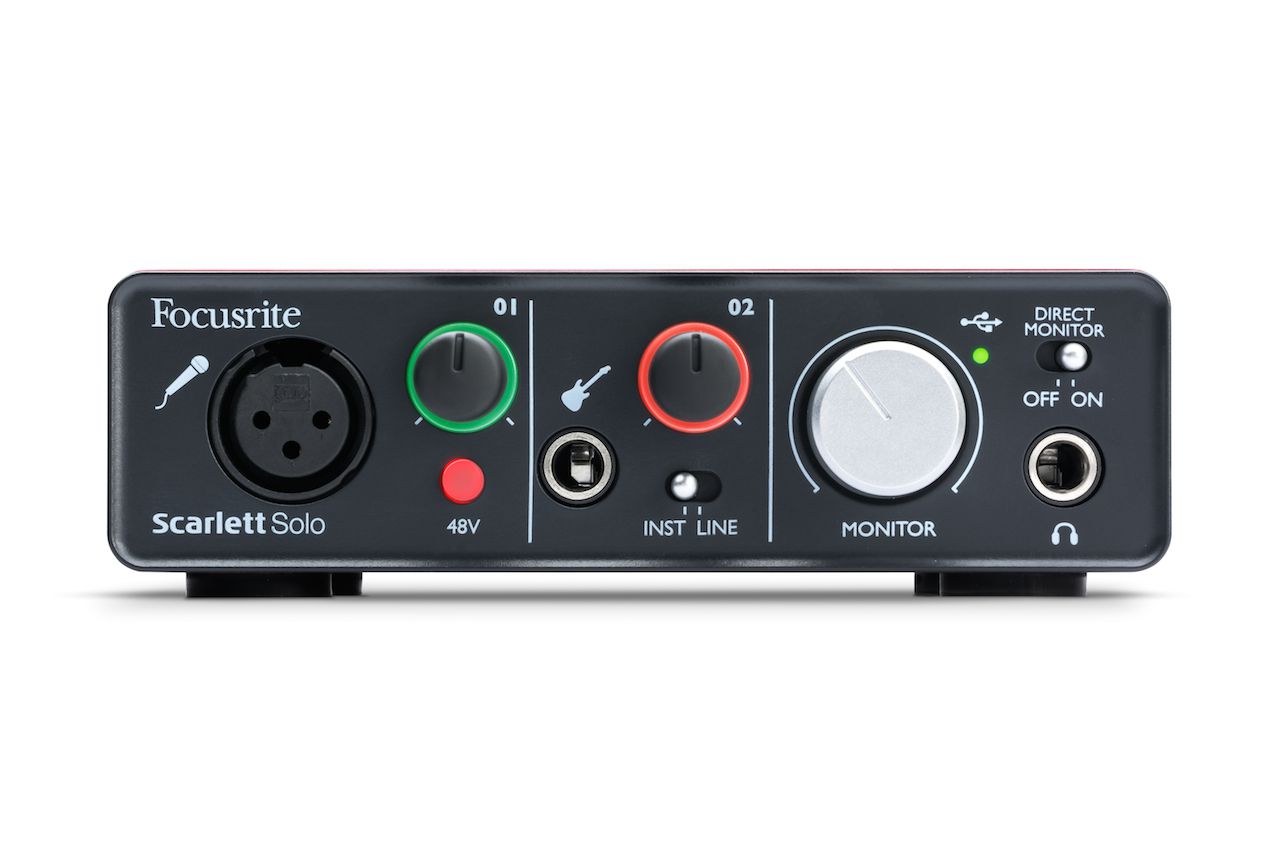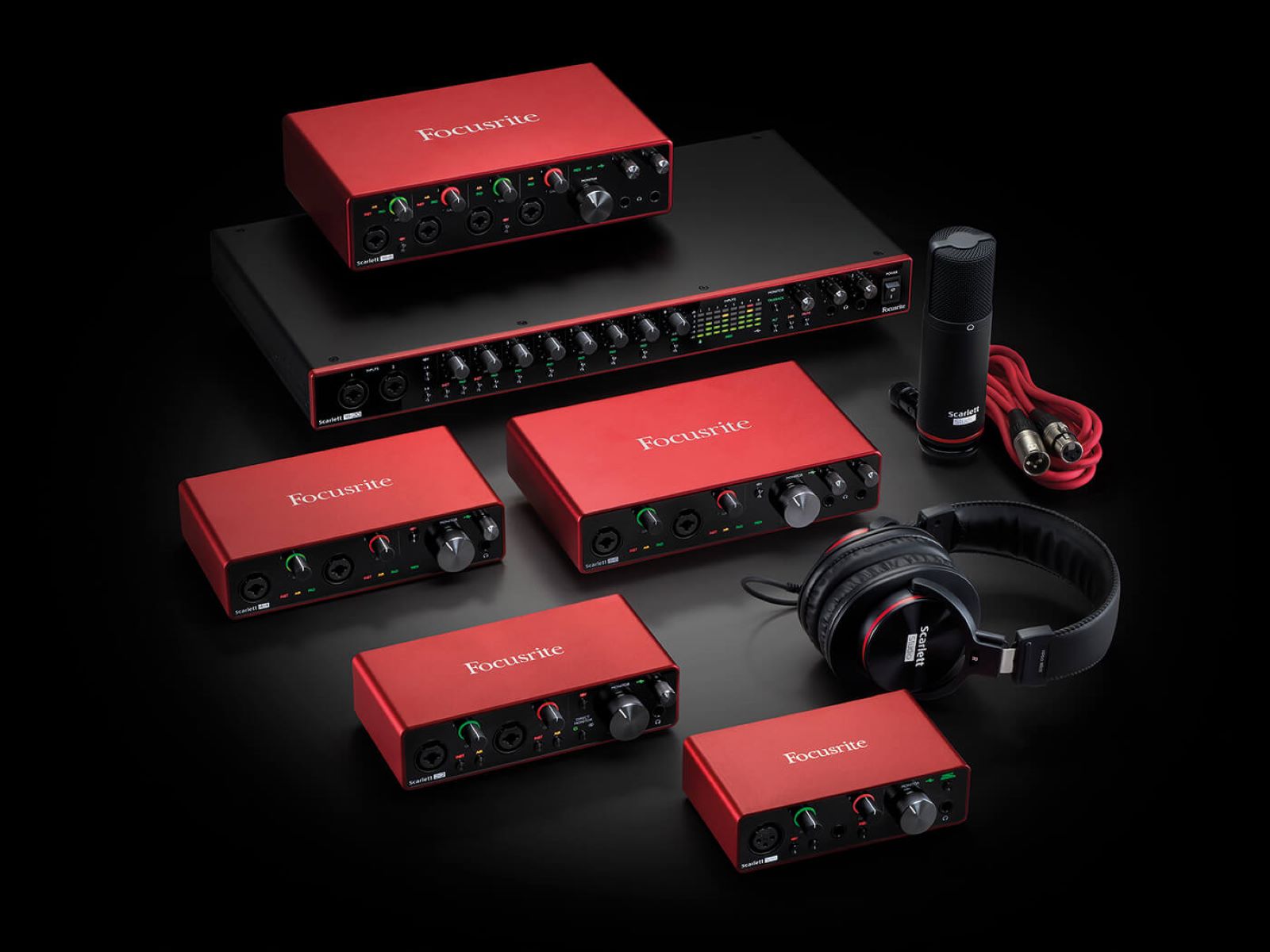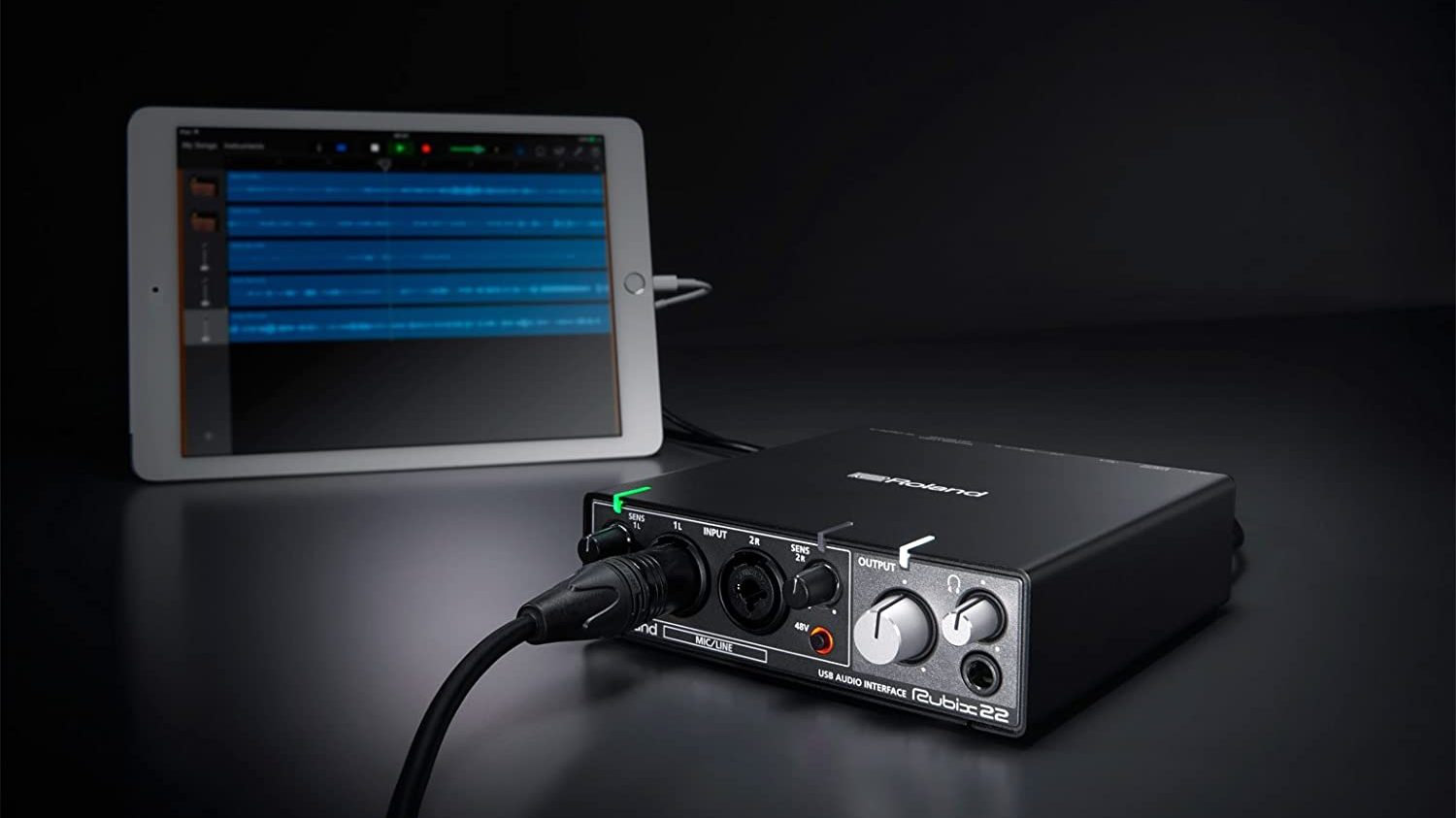Home>Production & Technology>Audio Interface>What Is A Good Audio Interface
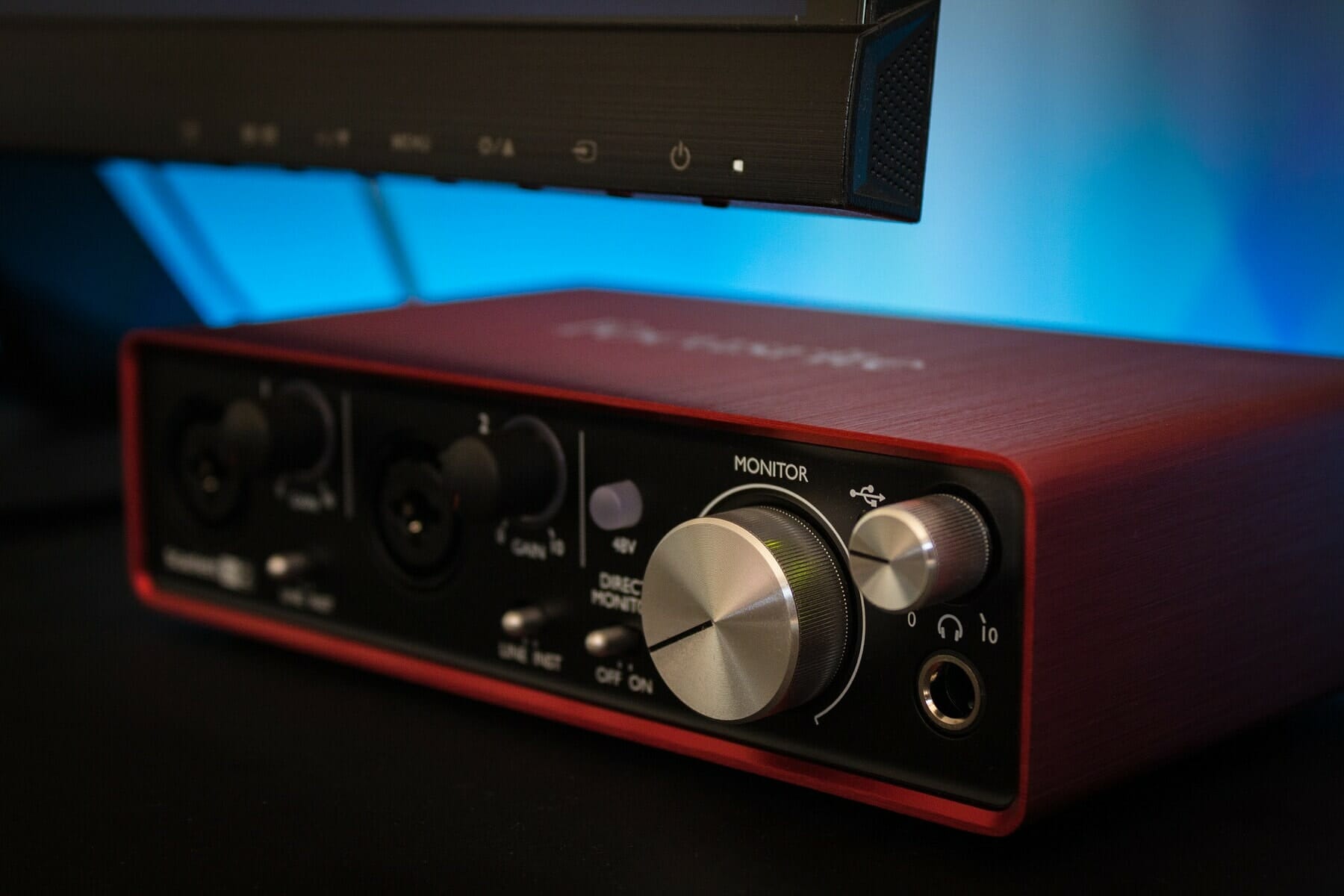

Audio Interface
What Is A Good Audio Interface
Modified: March 11, 2024
Discover what makes a good audio interface and how it enhances your audio production. Find the perfect audio interface for your needs.
(Many of the links in this article redirect to a specific reviewed product. Your purchase of these products through affiliate links helps to generate commission for AudioLover.com, at no extra cost. Learn more)
Table of Contents
Introduction
Welcome to the world of audio interfaces! If you’re a musician, podcaster, or content creator, you’ve likely heard of this essential piece of equipment. An audio interface is a device that connects your instruments, microphones, and other audio sources to your computer, allowing you to record, mix, and playback high-quality audio. But what exactly makes a good audio interface?
In this article, we will delve into the world of audio interfaces and explore the key factors that make a good audio interface stand out. Whether you’re a beginner or a seasoned professional, understanding the importance of a good audio interface can take your audio production to a whole new level.
An audio interface acts as the bridge between your analog audio equipment and your digital recording software. It converts analog signals into digital data and vice versa, ensuring a clean and reliable signal path. While computers have built-in sound cards, they often lack the necessary quality and inputs/outputs to meet the demands of professional audio production.
So, why is a good audio interface crucial? The quality of your audio interface can significantly impact the overall sound and performance of your recordings. A good audio interface will not only provide pristine audio quality but also offer features and connectivity options that suit your specific needs.
There are several factors to consider when choosing a good audio interface. Firstly, you need to assess your recording needs. Are you a solo musician who only needs to record a single instrument and a microphone? Or are you part of a band or podcast team that requires multiple inputs and outputs?
The number and types of inputs and outputs on an audio interface can vary, so it’s essential to choose one that matches your requirements. Additionally, the audio interface’s compatibility with your computer’s operating system and recording software is crucial to ensure seamless integration and optimal performance.
Another critical factor to consider is the audio interface’s preamp quality. Preamps amplify the weak signals from microphones or instruments to line level, ensuring a clean and robust signal. High-quality preamps can make a significant difference in capturing the nuances and dynamics of your recordings.
Furthermore, features like low latency monitoring, MIDI connectivity, and headphone outputs can enhance your workflow and convenience. Additionally, having a durable build and good customer support are also factors to consider when investing in an audio interface.
Now that we have covered the basics of audio interfaces and the importance of choosing a good one, let’s dive into the specific features and specifications you should look for in a high-quality audio interface.
Definition of an Audio Interface
An audio interface is a hardware device that serves as the intermediary between your analog audio sources, such as microphones, instruments, and speakers, and your computer or recording device. It essentially acts as a bridge, converting analog signals into digital data that can be understood by your computer’s recording software.
Think of an audio interface as a translator that takes the language of analog sound and translates it into the digital language that your computer can understand. By doing so, it allows you to record, edit, and manipulate audio using professional-grade software.
Audio interfaces come in various shapes, sizes, and configurations, but they all share the common purpose of providing high-quality audio recording and playback capabilities. They typically connect to your computer via a USB, Thunderbolt, or Firewire connection, allowing for fast and reliable data transfer.
One of the primary functions of an audio interface is to provide high-quality preamps. Preamps are essential for capturing low-level audio signals from microphones or instruments and boosting them to line level, where they can be properly recorded or processed. The quality of the preamps in an audio interface directly affects the clarity and fidelity of your recordings.
In addition to preamps, audio interfaces offer a variety of input and output options, allowing you to connect a range of audio devices. Inputs may include XLR or 1/4-inch jacks for microphones and instruments, while outputs may include headphone jacks or line-level outputs for connecting to speakers or mixers.
Many audio interfaces also feature built-in analog-to-digital and digital-to-analog converters, which are responsible for converting the analog audio signals into digital data and vice versa. These converters play a crucial role in determining the overall sound quality and resolution of your recordings.
Moreover, audio interfaces often provide additional features such as phantom power for condenser microphones, MIDI inputs and outputs for connecting external MIDI instruments, and hardware controls for adjusting input gain and monitoring levels in real-time.
Overall, an audio interface is an indispensable tool for anyone involved in audio production, whether you’re a musician, podcaster, or content creator. It allows you to capture high-quality audio recordings and provides the necessary connections and controls to optimize your workflow and creativity.
Importance of a Good Audio Interface
A good audio interface plays a crucial role in the quality and success of your audio recordings. It is not just a simple external sound card; it is the backbone of your entire audio production setup. Here are some key reasons why a good audio interface is important:
1. Improved Sound Quality: A good audio interface ensures better sound quality by providing high-resolution analog-to-digital (ADC) and digital-to-analog (DAC) converters. These converters have a significant impact on the clarity, depth, and dynamic range of your recordings. With better sound quality, your music, podcasts, or other audio content will sound professional and engaging.
2. Low Latency Monitoring: Latency refers to the delay between inputting an audio signal and hearing it through your headphones or speakers. A good audio interface offers low latency monitoring, allowing you to monitor your recordings in real-time without any noticeable delay. This is crucial, particularly for musicians, as it enables them to perform and record with precision and accuracy.
3. Input/Output Versatility: A good audio interface provides a range of input and output options to accommodate different audio sources and devices. This flexibility allows you to connect microphones, instruments, MIDI controllers, and other audio gear simultaneously, giving you the freedom to create complex and multi-layered recordings. Having multiple output options also ensures compatibility with different speakers, headphones, and audio monitoring systems.
4. Preamp Quality: The preamps in an audio interface amplify weak microphone signals to a line level suitable for recording. A good audio interface will have high-quality preamps that capture the nuances and subtleties of your audio sources accurately. This is especially important for capturing the full range of vocals, acoustic instruments, and other low-level signals. Cheap or built-in sound cards often have poor preamp quality, resulting in noisy or distorted recordings.
5. Stability and Reliability: A good audio interface provides a stable and reliable connection between your audio gear and computer. It is designed to handle the demands of professional audio production, ensuring minimal dropouts, glitches, or connectivity issues. This reliability is essential during recording sessions or live performances, where you cannot afford technical hiccups that may compromise your work.
6. Integration with Software: A good audio interface seamlessly integrates with your preferred recording software. It ensures compatibility with different operating systems and digital audio workstations (DAWs), allowing you to take full advantage of the software’s features and functionality. This integration enhances your workflow, making it easier to control input/output levels, access software effects and plugins, and monitor your recordings effectively.
7. Room for Growth: Investing in a good audio interface provides room for growth in your audio production journey. As you gain experience and expand your setup, you may require additional inputs, outputs, or advanced features. A good audio interface offers scalability, allowing you to add more equipment or upgrade to higher-end models without having to replace the entire setup.
Overall, a good audio interface is an essential tool for achieving professional-grade audio recordings. It enhances sound quality, provides versatility and stability, and integrates seamlessly with your recording software. Investing in a high-quality audio interface will greatly enhance your audio production capabilities and help you realize your creative vision.
Factors to Consider in Choosing a Good Audio Interface
Choosing the right audio interface is crucial for achieving high-quality audio recordings and seamless integration with your recording setup. With the myriad of options available, here are some key factors to consider when selecting a good audio interface:
1. Input and Output Configuration: The number and type of inputs and outputs on the audio interface should align with your recording needs. Consider how many microphones, instruments, and other audio sources you will be using simultaneously. Ensure that the interface has enough XLR, 1/4-inch, or MIDI ports to accommodate your setup. Additionally, look for balanced line outputs to connect to studio monitors or audio mixing consoles.
2. Compatibility: Ensure the audio interface is compatible with your computer’s operating system and recording software. Check the interface’s system requirements and compatibility lists provided by the manufacturer. Ensure that the interface offers drivers and software updates for your specific operating system to guarantee seamless integration and optimal performance.
3. Audio Quality and Preamp Performance: The audio interface should provide high-quality audio conversion and signal processing. Look for interfaces with high-resolution ADC and DAC converters to ensure accurate and detailed sound reproduction. Additionally, consider the quality of the preamps in the interface. Good preamps can capture the nuances and dynamics of your audio sources, resulting in cleaner and more professional recordings.
4. Connectivity Options: Consider the connectivity options offered by the audio interface. USB and Thunderbolt connections are common for audio interfaces, but ensure that your computer has the necessary ports. Additionally, look for interfaces with digital inputs and outputs such as ADAT or S/PDIF if you plan to expand your setup in the future. These connections allow you to connect additional external audio devices.
5. Sampling Rate and Bit Depth: The sampling rate and bit depth determine the audio quality and resolution. Higher sampling rates (e.g., 44.1 kHz, 48 kHz, 96 kHz) and bit depths (e.g., 16-bit, 24-bit) result in more accurate and detailed recordings. Consider the requirements of your workflow and the capabilities of your computer when selecting the sampling rate and bit depth supported by the audio interface.
6. Software Features: Some audio interfaces come with bundled software or plugins that can enhance your recording and mixing capabilities. Check if the interface offers any additional software, virtual instruments, or effects that align with your creative needs. Additionally, look for interfaces with built-in DSP (Digital Signal Processing) for near-zero latency monitoring and onboard mixing capabilities.
7. Build Quality and Durability: The build quality of the audio interface is important, especially if you plan to use it in a portable or live performance setting. Look for interfaces with sturdy metal enclosures and robust connectors. Ensure that the knobs, buttons, and switches feel solid and are designed for frequent use. A durable audio interface will withstand the rigors of regular use and provide reliable performance.
8. Budget: Consider your budget when selecting an audio interface. Determine how much you are willing to invest based on your current and future recording needs. Remember that while there are budget-friendly options available, investing in a higher-end interface can provide better audio quality, more features, and greater longevity.
By considering these factors, you can make an informed decision when choosing a good audio interface that meets your specific recording requirements and helps you achieve professional-grade audio recordings.
Features and Specifications of a Good Audio Interface
A good audio interface should not only provide high-quality audio conversion but also offer a range of features and specifications that enhance your recording workflow. Here are some key features and specifications to consider when choosing a good audio interface:
1. High-Quality Audio Conversion: An audio interface should have high-resolution analog-to-digital (ADC) and digital-to-analog (DAC) converters that accurately capture and reproduce audio signals. Look for interfaces with a high sample rate and bit depth, such as 24-bit/192kHz, to ensure detailed and accurate sound reproduction.
2. Multiple Inputs and Outputs: Consider the number and types of inputs and outputs available on the audio interface. Look for interfaces with a variety of XLR, 1/4-inch, or MIDI connections to accommodate your recording needs. Having multiple inputs and outputs allows you to connect microphones, instruments, and other audio gear simultaneously.
3. Flexible Monitoring Options: A good audio interface should offer flexible monitoring options. Look for interfaces with dedicated headphone outputs and volume controls, allowing you to monitor your recordings with precision. Some interfaces also offer separate monitor outputs for connecting studio monitors or external audio gear.
4. Low Latency Monitoring: Low latency monitoring is crucial for real-time monitoring of your recordings without any noticeable delay. An audio interface with direct monitoring capabilities or built-in DSP allows you to hear your audio sources in real-time while recording, eliminating any distracting latency issues.
5. High-Quality Preamps: The quality of the preamps in an audio interface directly affects the clarity and fidelity of your recordings. Look for interfaces with high-quality preamps that provide clean and transparent amplification of your microphone or instrument signals. Good preamps capture the subtleties and dynamics of your audio sources accurately.
6. Phantom Power: If you plan to use condenser microphones, ensure that the audio interface provides phantom power. Phantom power is required to power these types of microphones and is typically provided at +48 volts. Having this feature eliminates the need for external power supplies or phantom power adapters.
7. MIDI Connectivity: If you work with MIDI instruments or controllers, consider an audio interface that offers MIDI inputs and outputs. This allows you to connect external MIDI devices directly to your interface, expanding your creative possibilities and making it easier to record and control MIDI-based instruments and software.
8. Software Compatibility: Check the audio interface’s compatibility with your preferred recording software or Digital Audio Workstation (DAW). Ensure that the interface provides drivers and software updates for your operating system to guarantee seamless integration and optimal performance. Compatibility with popular software platforms like Pro Tools, Logic Pro, Ableton Live, or Cubase is essential.
9. Build Quality: The build quality of the audio interface is important, especially if you plan to use it in a portable or live performance setting. Look for interfaces with sturdy metal enclosures and durable connectors. Consider interfaces with ergonomic design features, such as easy-to-use controls and intuitive layout, for a comfortable recording experience.
10. Expandability: Consider if the audio interface offers expandability options. Some interfaces have ADAT or S/PDIF optical ports that allow you to connect external AD/DA converters, providing additional input and output channels. This flexibility allows you to expand your setup as your recording needs grow.
Remember to consider your specific recording requirements and budget when evaluating the features and specifications of an audio interface. By selecting an interface that meets your needs, you can ensure a seamless and efficient recording process that results in high-quality audio productions.
Popular Brands and Models of Audio Interfaces
When it comes to audio interfaces, several brands have established themselves as leaders in the industry, offering reliable and high-quality products. Here are some popular brands and their models that are widely trusted by musicians, producers, and audio enthusiasts:
1. Focusrite: Focusrite is recognized for its high-quality audio interfaces at various price points. The Scarlett series is particularly popular, offering models like the Scarlett 2i2 and Scarlett 18i20, which provide excellent sound quality and flexible connectivity options for home studios and professional setups.
2. Universal Audio: Universal Audio is known for its top-of-the-line audio interfaces with exceptional sound quality and industry-leading signal processing capabilities. The Apollo Twin and Apollo X series are highly regarded by professionals, providing low latency, DSP-powered plugin processing, and integration with Universal Audio’s extensive lineup of plugins.
3. PreSonus: PreSonus offers a range of audio interfaces that cater to different recording needs. The AudioBox USB and Studio series are popular choices, providing reliable performance, solid build quality, and budget-friendly options for both beginners and experienced users.
4. Apogee: Apogee is renowned for its high-end audio interfaces designed for professional recording. The Apogee Ensemble and Element series offer pristine sound quality, low latency, and premium preamps, making them ideal for professional studios and advanced users seeking uncompromising audio performance.
5. RME: RME audio interfaces are highly regarded for their exceptional audio quality, advanced features, and low latency performance. The RME Babyface Pro and Fireface series are popular choices among professionals, offering superb sound quality, robust build, and a wide range of I/O options.
6. MOTU: MOTU (Mark of the Unicorn) is known for its versatile and feature-rich audio interfaces that cater to both recording and live performance applications. The MOTU 828es and UltraLite-mk4 are widely used and offer extensive connectivity options, solid build quality, and reliable performance.
7. Audient: Audient audio interfaces are recognized for their transparent and clean sound reproduction. The Audient iD series, including models like iD4 and iD14, are popular among home studio owners and musicians who require high-quality recordings without breaking the bank.
8. Native Instruments: Known primarily for their software and hardware for music production, Native Instruments also offers audio interfaces. The Komplete Audio series, such as Komplete Audio 6, combines solid audio performance, sleek design, and integration with Native Instruments’ software, making them popular choices in the electronic music production community.
These are just a few examples of popular brands and models in the audio interface market. It’s important to research and consider your specific requirements, budget, and the compatibility with your recording setup when choosing an audio interface. Reading reviews, checking user experiences, and seeking recommendations from fellow musicians and professionals can also help in making an informed decision.
Ultimately, the right audio interface for you will depend on your specific needs and preferences, so take the time to explore the options available and find the one that best suits your recording setup and goals.
Conclusion
Choosing a good audio interface is a critical decision for anyone involved in audio production, whether you’re a musician, podcaster, or content creator. It serves as the bridge between your analog audio sources and your digital recording setup, ensuring high-quality sound and seamless integration. Throughout this article, we have explored what makes a good audio interface and the factors to consider when making a choice.
An audio interface should provide excellent audio quality with high-resolution ADC and DAC converters, allowing for accurate and detailed sound reproduction. It should offer a versatile range of inputs and outputs to accommodate your specific recording needs and connectivity requirements. The preamps of the audio interface should deliver clean and transparent amplification of your audio sources, capturing every nuance and detail.
Other features to consider include low latency monitoring, phantom power for condenser microphones, MIDI connectivity, and software compatibility. The build quality of the audio interface is also important to ensure durability and reliability. Your budget and potential for future expansion should also be taken into account.
Popular brands such as Focusrite, Universal Audio, PreSonus, Apogee, RME, MOTU, Audient, and Native Instruments offer a variety of high-quality audio interfaces that cater to different recording needs and budgets.
In conclusion, investing in a good audio interface is fundamental to achieving professional-grade audio recordings. It enhances sound quality, provides versatile connectivity options, and improves your workflow. By considering the factors discussed in this article and exploring different brands and models, you can find the perfect audio interface that meets your specific requirements and helps you create exceptional audio content.
So, take the time to research, compare, and choose wisely. Your audio interface is the backbone of your recording setup, and selecting a good one will elevate your recordings and enable you to unleash your creative potential.

